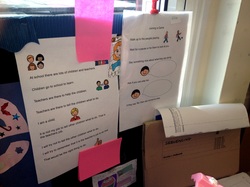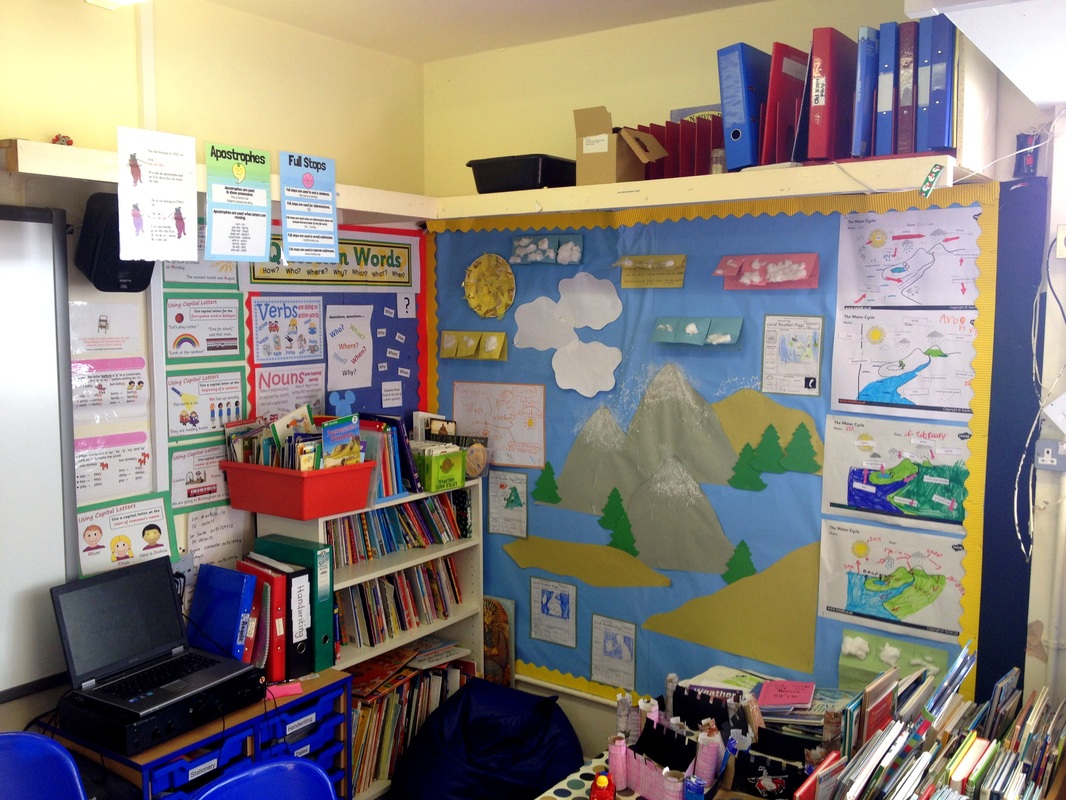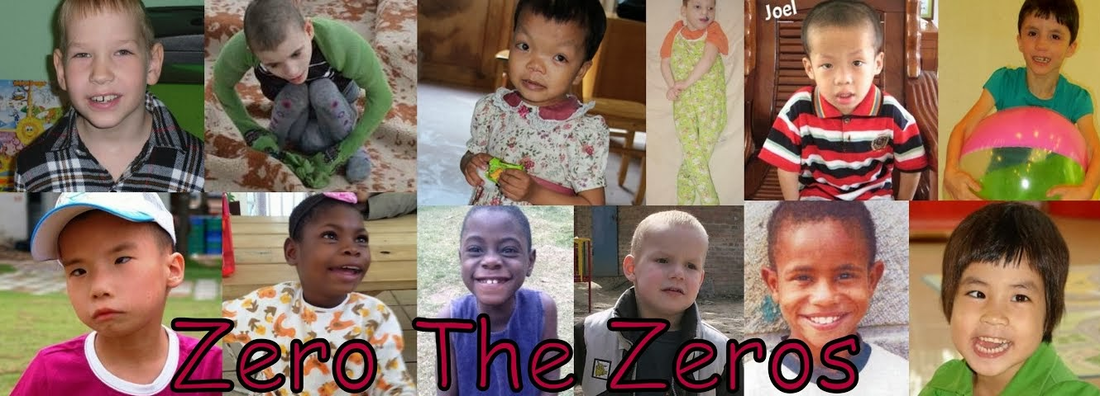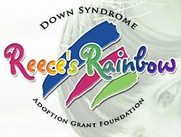| Kids normally do a great job at accepting other people right off the bat, before they even really get to know each other. This innocence is tainted with experience as they get older, but it's mainly experiences taught to them by others (ie adults). I'm learning all about how to teach kids with disabilities in my class "Teaching Students with Special Needs." One of the biggest difficulties is dealing with how other kids perceive and treat them because of their disabilities (anything from dyslexia to Down syndrome to Cerebral Palsy). As teachers, we can model appropriate behavior and have a sizable impact. The trick? Treat a kid like a kid, no matter how different they may be. | |
|
0 Comments
Today I got to visit St. Nicholas Primary School in Oxford! I was shown around by my mum’s cousin (my first cousin once removed) Harriet who I last saw when her family came and visited New York City a few years ago. It was great to see her again and I am very grateful she arranged the visit to St. Nicholas.
When the Base’s kids first walk in (on the 8-11 side), they do some individual work and then move into a bigger group to work on handwriting skills (this includes OT hand-strengthening exercises and other activities to focus and quiet the group). They put up the day of the week (along with other things) on a Velcro board, then moved to a dance activity (which they do every Tuesday). At least one student joined the mainstream class at this time, but most of the students combined with the other side of the CIRB and went into the assembly hall. Here they did some physical exercise, dance routines, and following of simple directions: the kids seemed to have a great time. Next was music with rhythm, memory, and singing games and songs. Some of the kids got very involved with the activities and looked like they were enjoying them! When the groups broke up again, I stayed with the younger kids and saw math and counting practice along with a size comparison activity. Then came lunch, break, and play time (students had an 30 min for lunch and 30 min for recess), at which point I moved back to the older group to observe and participate in silent independent reading, stations, board games and “choosing time” (kids get to pick their own activity). Finally, students were dismissed at 1450 (mainstream students left at 1515).  One of the more interesting things I got to see was the station time the older kids did towards the end of the day. Essentially they were puzzles or activities meant to challenge them, like “build a copy of this out of blocks” or “draw the mirror image of this design.” There was very little if any verbal instruction from the adults and it was fascinating because I could actually see their minds working as they solved the problems given to them. The board game time was also a valuable part of the day as the adults worked on social skills like being gracious winners and not getting too “bent out of shape” after a loss. There seemed to be a focus on social skills, which is extremely valuable for kids with Autism, and they made a point to go over how to behave in certain situations. After the students had left for the day, I asked the adults some questions about their school and the system as a whole. The biggest thing they said needed to be improved was that the government and schools needed to begin treating students as individuals. For example, it would be unreasonable to require that students must pass English and math to leave school, since for many special education kids that is an unattainable goal. The adults also said that SNPS was very good at providing creative outlets for the kids and that often the school observes a week-long theme (this week was “Science Week”). Students also have the opportunity to participate in many extra-curricular activities, as well as having a fair amount of the day put aside for physical activity. Specifically, the kids in the Base went swimming once a week and horseback riding every 3 weeks, along with practicing dance routines and break times.
Overall I met some great teachers and assistants, whose patience and caring were boundless. I really did learn a great deal and I had a blast while doing it. I want to thank Harriet for arranging the opportunity, as well as the staff and administration of St. Nicholas Primary School for welcoming me into their wonderful school!!!
This post is from a family friend who used to work with my mum and dad at Elks Camp Moore! Born in Lincolnshire, England, Jenny worked for many years with children and young adults with disabilities in a variety of settings, including residential schools with children with cerebral palsy; group homes and summer programs with deaf/blind clients; nanny to children with cerebral palsy; a school for teenagers with challenging behavior; and a summer camp for children with a variety of special needs. She married her husband Randall, and moved to South Dakota, in 1997. For the past 13 years Jenny has been self employed, running an inclusive daycare, and raising their now 10 year old son (who is quite the soccer star!). A few years ago I read an article in People magazine, about an organization called Reece's Rainbow who, in a nutshell, advocate and find adoptive families for orphans with Down Syndrome and other special needs. Children who would otherwise spend their lives in orphanages and mental institutes, hidden from the world. They raise adoption grants and promote awareness. Since 2006, over 1000 children have been adopted internationally through Reece's Rainbow.
At the time, the older children listed (over the age of 6) had a collective grant – when a family stepped forward for an older child, they received the whole grant, which was then reset to zero. Thankfully, this soon changed, so that each child had their own, individual grant, meaning you could donate to a particular child. Unfortunately, this also meant that over 100 children suddenly had a grant with ZERO in it. I couldn't just sit back and let that be – seeing a zero on a child's profile was like a kick in the face to me – every child is worth SO much more than that, and I wanted to show that, by donating to a child and zapping that zero, that someone, somewhere, cared about that child. So began my blog, and my advocating for the least of the least – those children with zero in their grants, the older children who had been passed over again and again. My Zero The Zeros blog (www.zerothezeros.blogspot.com) doesn't have a huge readership, but it is a work of love, and is ongoing. We DID manage to get all of those zeros zapped back in 2011 – but, as more and more children are listed for adoption, then more and more children start with zero. It is an uphill battle, but, to me, it is so worth it. To see those grants grow, and to see those children adopted, is just priceless!!
Children that in the USA would receive the best of medical care, and therapies, and education, are left to waste away and die. Children that in the USA can grow up to be productive members of society – living and working a normal life – are deemed unworthy, and cast away. THIS is why I advocate. THIS is why I shout. I shout for those who cannot shout for themselves. Remember Heath ? I wasn't the only one to see him. Many people around the country – and the world – shouted for Heath and so many other children – and within a couple of years, Heath was “fully funded” - meaning, if an adoptive family stepped forward for him, their costs would be fully paid for !! Yet still he waited. And waited. Until, finally, just about a year ago, a family saw him and said “YES” !!! They claimed him as their son, and, after working through the adoption process, they were able to bring him home around Thanksgiving 2013. His new name is Boden, and he is absolutely thriving – the love of a family has no bounds !! Yet another great example of how children with disabilities affect the ones around them! Great video, definitely worth watching. Just got shared to me on Facebook and I felt like I had to post it! Make sure you have your tissues ready... To connect it in some way to "education": This is a great example of how integrating children with disabilities into mainstream schools affects both sets of children! I am all for getting these kids together because they can all learn from each other, many times without any prompting at all. Kids naturally want to play with other kids, they have the ability to look past physical defects and see "what's on the inside". And you know what? Conner is a pretty cool kid, and so is his brother Cayden. |
Categories
All
Archives
December 2015
|






 RSS Feed
RSS Feed